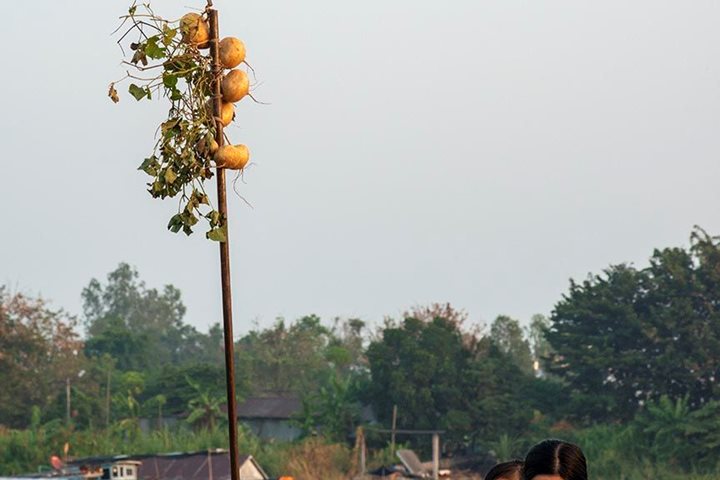Ah, Phnom Penh! Capital of Cambodia!
After spending the night anchored at the confluence of the Mekong and the Tonle Sap Rivers, our ship Jahan meets again its older sister, the Jayavarman, docked along Sisowath Quay on Phnom Penh's riverfront. Phnom Penh is already well awake...
Leaving both ships, we are welcomed by a fleet of cyclos, traditional four-wheel transports pedal-powered by dedicated and fearless riders. Whizzing through the dense traffic, we cycle past the post office, the hill of Wat Phnom (foundation site of the city), along the U.S. embassy then down the Norodom Boulevard towards the National Museum of Cambodia. There, dozens of exquisite sandstone statues, masterpieces collected all over the country, depict Hindu gods, Buddhas, and kings venerated from the 6th to the 19th century.
Cambodia is the cradle of the ancient civilization of Angkor but its recent history is tragic. From 1975 to 1979, the infamous Khmer Rouge regime was responsible for the death of up to two million Cambodians. Many of them were sent to S-21, a secret interrogation facility installed in the former school of Tuol Sleng. Submitted to torture and daily abuses, more than 10,000 inmates confessed to crimes they never committed, before being sent to the killing fields for a summary execution.
After a French-inspired lunch at Topaze restaurant, we reach the Royal Palace, which was established in 1866 by King Norodom under the French protectorate. Early morning, the palace was not accessible to the public as, resonating to the sounds of traditional music, it was used to celebrate Meak Bochea, an annual Buddhist ceremony commemorating the announcement of the death of Buddhas. Our visit of the royal enclosure ends with the Temple of the Emerald Buddha, also known as the Silver Pagoda for its floor made of more than 5,000 handcrafted silver tiles.
Leaving the palace, we head for the memorial site of Choeung Ek, where thousands of Cambodians were mercilessly executed and buried in shallow graves. A large stupa is now erected in the middle of the fields to honor the victims of the Khmer Rouge regime.
On our way back to the ship, stuck in the dense traffic, we leave our transport behind and enjoy a walk along the riverfront back to the Jahan. The evening is dedicated to the Khmer Traditional Arts, with an Apsara dance show to the sound of traditional music instruments, an ideal way to end our day discovering the capital city of Cambodia!







